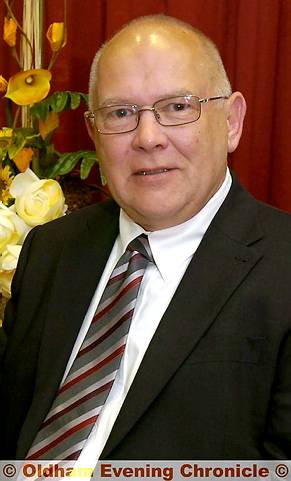Real hope for the future
Reporter: Richard Hooton
Date published: 26 May 2011
IT’S 10 years since Oldham hit national headlines with three days of rioting that shook the borough. In the fourth of a five-part feature, reporter Richard Hooton looks at the Oldham Beyond vision and whether it is being achieved.
BY 2020, Oldham will be a confident place celebrating its diverse communities and landscapes.
That was the vision of Oldham Beyond — a strategy for the renaissance of the borough that was revealed in 2004.
In the aftermath of the race riots, it aimed to inspire an attractive borough where people were proud to live and work with a thriving town centre attracting people to its university college, cultural facilities and broad range of shopping and leisure uses.
There were 80 recommendations, from better street-cleaning to multi-million-pound plans for change.
Among the more ambitious suggestions were a West End based around a new Coliseum and Roxy Cinema, turning Featherstall Road into an Asian Bazaar and converting the vacant Robert Fletcher mill in Greenfield into an extreme sports and outdoor pursuits centre.
Also yet to materialise were a revamped town square with a new pedestrianised area linking in with the old town hall, developing Latics’ stadium, and a sky-cafe at the top of the civic centre tower. Creating a major business location at the Hollinwood junction of the M60 appears to be in the pipeline, while one at Mumps is progressing through the arrival of Metrolink.
Successes include the development of a university college as a jewel in the crown of the local education system and building new secondary schools.
Former mayor David Jones argues that other initiatives such as rejuvenating Yorkshire Street, creating a “green corridor” and bringing mills back into use are cosmetic changes compared with the fundamental problems caused by segregated education and housing that the document aimed to address.
He believes these are the main problems that faced Oldham 10 years ago and to a certain extent still do now.
Mr Jones, who retired from the council this month after 28 years, said: “The issues surrounding segregated housing have been a very difficult nettle to grasp. Trying to influence where people choose to live is virtually impossible without restricting people’s right to choose.
“However, in terms of the council-owned housing stock, there has been very limited success in integrating people from differing communities.
“There are still estates in Oldham where it has been virtually impossible for members of the Pakistani or Bangladeshi community to settle.
“There was a glimmer of hope in the private sector, both as owner-occupiers and rental, with the announcement of Oldham as a Housing Market Renewal Pathway authority. It is a great shame that just as the long battle to secure CPOs was won, the Government withdrew the funding stream. The plans already in train may help to go someway to improving the situation.
“In the field of education, matters are much better.
“While schools are a reflection of the communities they serve, this being particularly true of primary schools, parents are aware of the issues of white flight from schools with growing Asian heritage numbers, and are choosing to let their children attend schools which otherwise would be mono-cultural.
“Secondary education has always taken place in culturally mixed schools but there had been some consolidation of certain schools as serving a distinct community. The determination of the council to reorganise secondary schools to make them serve wider communities has been successful especially since money became available to rebuild, modernise and close schools through the Building Schools for the Future scheme.
“The growth of the Oldham College and the Sixth Form College has been partly due to both establishments being seen as safe environments for young people from all communities.
“They have been particularly successful in recruiting and retaining young women from the Asian heritage communities who were grossly under-represented in 16+ education.
“This along with the opening of the university centre in Oldham has led to a large number of young people who were not traditionally going into higher education, this includes white working class students, now accessing tertiary education.
“Of all the issues that needed tackling, these two show mixed success in tackling two of the most deep-seated problems that faced Oldham over the last, not just 10 years, but 20 or so years.”
Tomorrow: Criticism of policing and the community — and how it has been addressed.
Most Viewed News Stories
- 1Oldham man caged after 150 wraps of crack cocaine were found during house search
- 2Police probe follows Chadderton pepper-spraying incident
- 3Dynamic rescue team duo pledge to raise funds for brave Finn
- 4‘Completely inappropriate’ caravan park plans rejected
- 5Councillor challenges village post box issues





